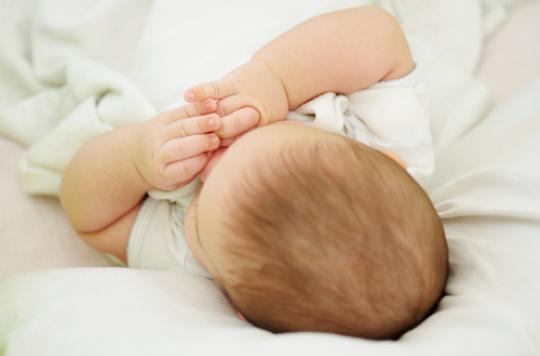Sudden infant death syndrome usually occurs before the age of 6 months and could in part be linked to a rare genetic mutation that is believed to affect babies’ respiratory muscles, according to a British study. Explanations.

Under the direction of Prof. Michael Hanna of the Center for Neuromuscular Diseases at University College London, British researchers have discovered that a rare genetic mutation could potentially be involved in sudden infant death syndrome. Their study study was published on March 28 in the scientific journal The Lancet.
New research identifies potential genetic link in sudden infant death syndrome #SIDS https://t.co/r4SA9rMddr pic.twitter.com/dzEcXqEp3v
– The Lancet (@TheLancet) March 28, 2018
A rare genetic mutation, SCN4A
In the course of their work, the researchers looked at the cases of 278 children who died unexpectedly and classified as affiliated with Sudden Infant Death Syndrome: 84 in the UK and 194 in the US. In particular, they compared their genes with those of 729 matched adults who had no history of cardiovascular, respiratory or neurological disease.
They then highlighted the mutation of the SCN4A gene, which can cause a series of genetic neuromuscular problems (myopathies, myasthenic syndromes, etc.), as well as difficulty in breathing. However, this mutation remains very rare: it was only found in four of the deceased children and none of the adults. They estimate that it is found in less than five people in 100,000. According to the authors, this genetic mutation could weaken the respiratory muscles of children and thus cause sudden infant death, in particular “if they sleep in a bad position or get tangled in the sheets “.
Recommendations from professionals
However, this genetic mutation cannot explain by itself all the cases of sudden infant death syndrome observed, specify the authors. It is therefore necessary to respect the recommendations of professionals to avoid any drama. It is therefore recommended to put your child on his back in a bed with a firm mattress, not to use a pillow or duvet, but to prefer a sleeping bag adapted to the season and not to heat the room too much: the temperature must be between 18 and 20 ° C. Be careful also with soft toys and bed bumpers: babies can stick to them and suffocate. Also, avoid placing your baby on a sofa, an adult bed or an armchair.
In short, if sleeping with your infant may seem more convenient for breastfeeding, it is a very bad idea. This multiplies by 5 the risk of sudden death according to a team of British researchers from London School of Hygiene and Tropical Medicine which in 2013 studied 19 studies on the subject, or 1472 cases. Result: 22% of recorded deaths occurred in families who practiced “co-sleeping” or “cosleeping”. Researchers estimated that 88% of these unexpected infant deaths “probably” would not have happened if the babies had slept in their cribs.
Little boys are the most affected
Babies from multiple pregnancies, premature, very small at birth, not breastfed, exposed to passive or fetal smoking, or even males are more exposed. Indeed, little boys are twice as victims of sudden death as little girls. In 25% of cases, no cause is found to explain the death of the infant.
Usually occurring before the age of 6 months, Sudden Infant Death Syndrome (SIDS) is the unexpected death of an apparently healthy infant while sleeping. The leading cause of post-neonatal infant mortality in high-income countries, it is responsible for around 2,400 deaths per year in the United States.
Around 500 cases identified each year in France
In France, a study published in 2016 by The National Observatory for Unexpected Infant Death recalled that sudden infant death syndrome represented nearly 500 cases per year even if “in fact, many unexpected deaths are classified as sudden infant death syndrome and should not be”. The rate of MSN is important in the years 70%. It was not until the 1990s that awareness campaigns reduced the number of cases by 75% for example, from 1,464 cases in 1991 to 450 cases in 1996 and 358 cases in 1997 according to inserm.
.
















